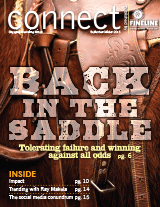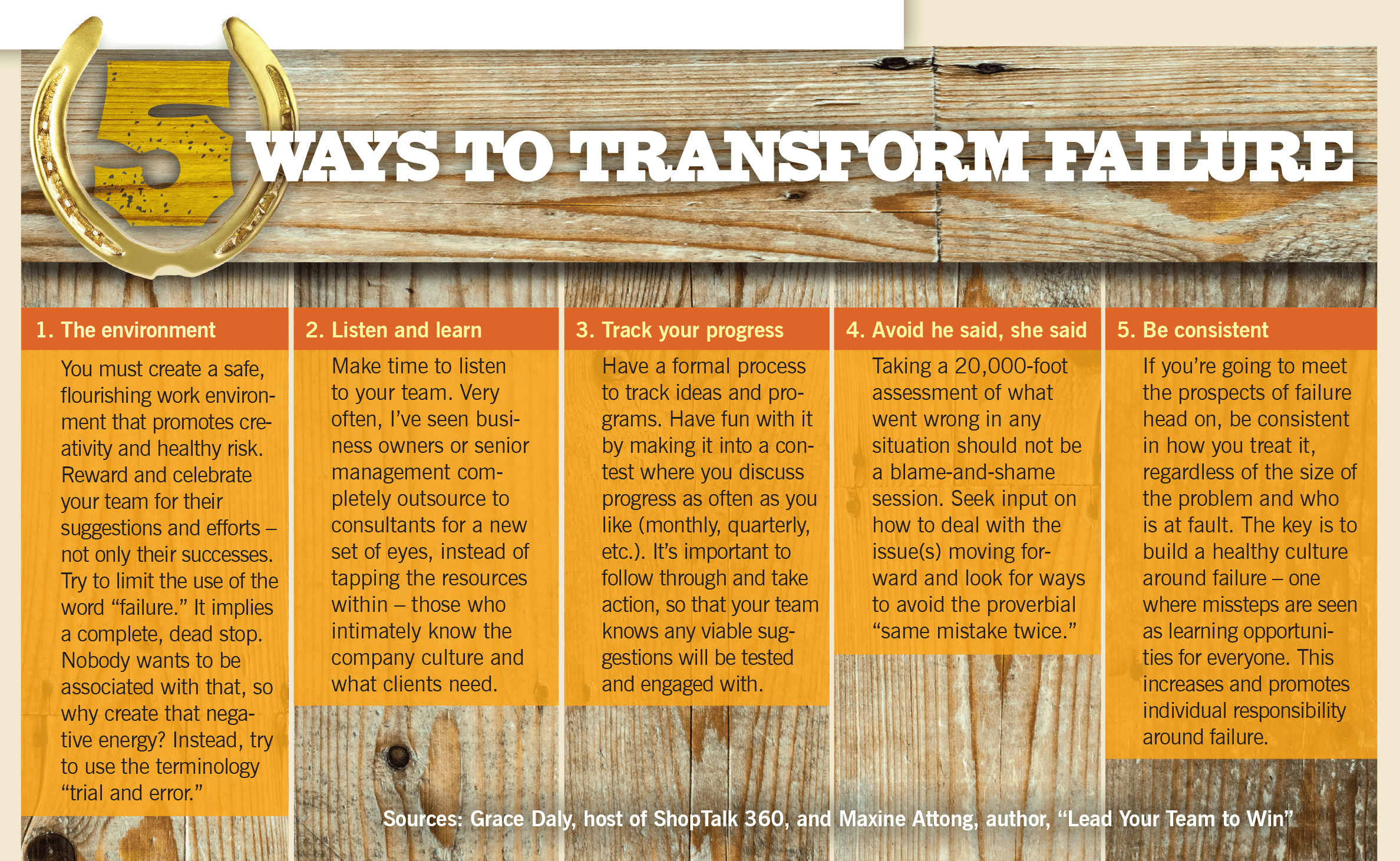Back in the Saddle: Tolerating failure & winning against all odds
It happens. But not to you, right? Not now. Not here. Not with everybody looking and waiting and depending on every move, every step you take. This part of the process wasn’t in the plans. It wasn’t what you, your team or your customers had in mind when the first discussions about the whole deal went down.
But guess what? It did happen. It was you. It is now. Here. And there isn’t a person in the room who isn’t looking at you for the next move.
Failure is simultaneously our biggest fear and our greatest teacher. And contrary to popular opinion, failure is not the opposite of success – it is a milestone on the journey to success. It is a steppingstone that points the way forward. More specifically, failure signals that we are out of our comfort zone and learning as a result of it.
“Mistakes are the portal of discovery.”
-James Joyce
Grace Daly knows about failure. As the host of ShopTalk 360, a popular podcast, and author of a leadership book series, she extols the virtues of learning from the trials and tribulations that occur in our daily lives.
“Tolerating failure is an essential key to success,” Daly says. “The only way to achieve our ultimate desired result in any endeavor is through trial and error. Failure is simply a trial and error process with varying degrees of risks and results. People who are afraid of failure will always stay in what they feel is their ‘safe’ zone. There, they will never be able to embrace the possibility or actuality of how success can be achieved.”
You know the drill by now. The greatest lesson you can learn is not to repeat the same mistake twice. You’ve heard it over and over again. You’re only human. You’re going to make mistakes from time to time. To err is human, and all the rest.
But as Daly, and the scores of other experts say, it’s not enough to just memorize these leadership proverbs; you actually have to act upon them. “Overcoming business failure is all based on your bounce-back stamina. What’s yours? At the end of the day, remember; it’s just business. Learn from it, grow from it and continue to be fiscally responsible. If you are fortunate enough to have your health and your loved ones, infinite possibilities and growth exist for everything else.”
If you’re looking for an “I-justmade-a-mistake-and-I-cannotget-up” refresher course, Daly offers these simple steps. Start by changing your perception of the whole “failure” mindset by thinking of it as a live experiment. This will help encourage creativity and open up untapped resources.
Next, remember that everybody has to work through these trial-and-error processes – business and personal. It is a part of life and, honestly, there are no shortcuts. We only hear about the success stories, not the stumbles along the way.
It’s a cultural thing
Tell me if you’ve seen this before. Your employee comes into your office with a look that says everything behind him has gone up in flames, and that you missed the fire. Things happen that fast.
Your only course of action when failure occurs is to assess the situation, develop a game plan that can extinguish the flames, and then work to find where the system broke down.
The moral to the whole story – and your real takeaway – is to build a culture where mistakes are embraced as opportunities, where people can openly talk about where they can improve and avoid a lasting negative impression. That’s what Maxine Attong preaches on every mountaintop.
“I am big on providing safe environments in which these discussions can occur,” says Attong, author of “Lead Your Team to Win: Achieve Optimal Performance By Providing A Safe Space For Employees.” “When humans feel unsafe, we fight, take flight or freeze. When we feel safe, we slow down, listen and understand.”
Attong believes the motive for the discussion must be clearly stated, so that the employees know it is not a time for blame-and-shame sessions, but to seek improvements in their ability to deal with future situations. “Leaders need to be consistent in our treatment of failure, regardless of the size of the problem and who is at fault. Build a healthy culture around failure, where failure is seen as a learning opportunity for everyone. This increases the level of honesty about failures and promotes individual responsibility.”
The new toy in your leadership toolbox is to be tolerant of failure and not to tolerate negative attitudes around failure.
The new toy in your leadership toolbox is to be tolerant of failure and not to tolerate negative attitudes around failure. “I have to mentally prepare myself to deal with people who lament, ‘Why me?’ or deny their role in the event or pass the buck when things fail,” Attong says. “I am immediately ready to work with the individual who accepts personal responsibility for the misstep and is willing to work to make amends.”
If you want to write down your new mantra, Attong offers this: There are three lessons every person should take away from tolerating failure:
• I am not a failure. I have the ability to overcome this.
• I will take personal responsibility for my role in this and make amends.
• There is a lot to learn from failure.
It could make me a winner. “I only consider a situation too big to overcome when, at an individual level, there is no learning from the situation, no change in thinking or belief systems,” Attong says. “If there were no lessons learned, then regardless of the success trajectory, the person has failed.”
“I am big on providing safe environments in which these discussions can occur. When humans feel unsafe, we fight, take flight or freeze. When we feel safe, we slow down, listen and understand.”
– Maxine Attong, Author, “Lead Your Team to Win”
Featured in Connect Magazine, September/October 2015.
Read the full digital version here.


